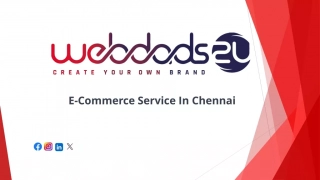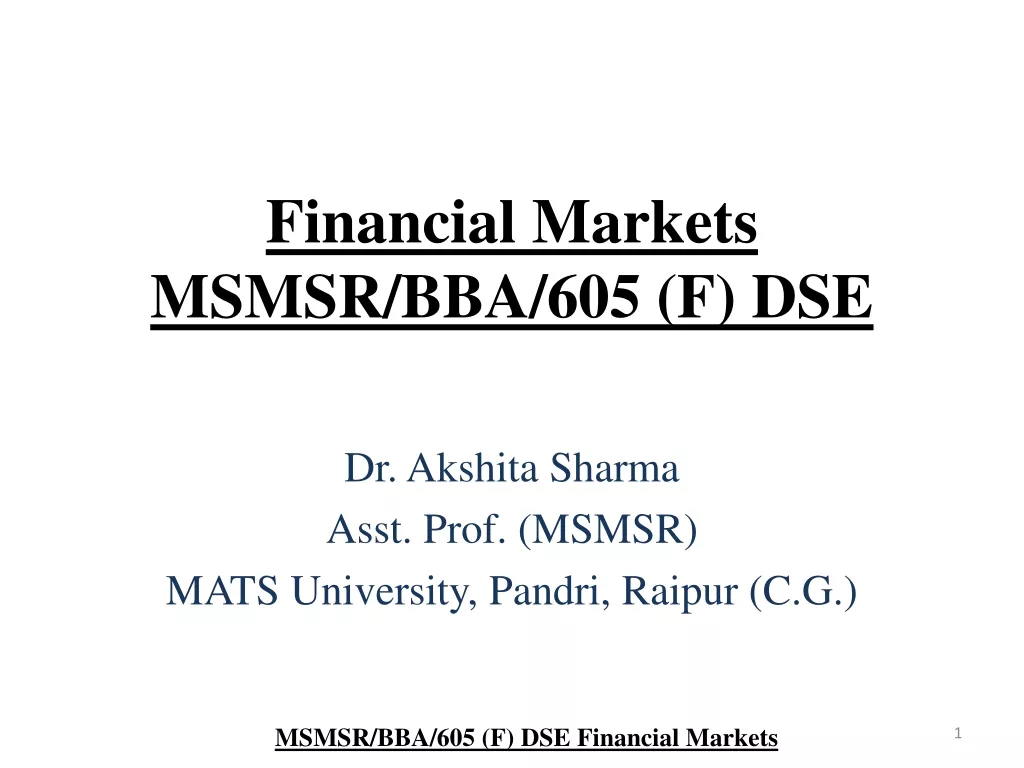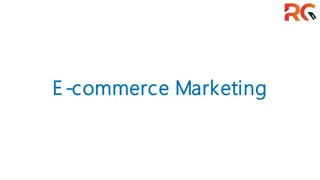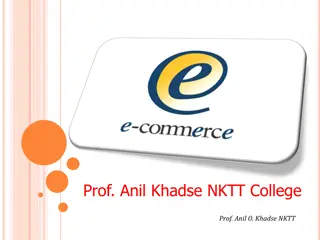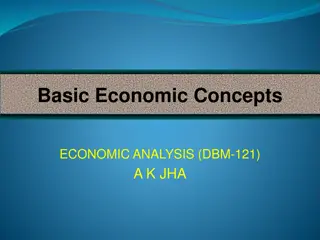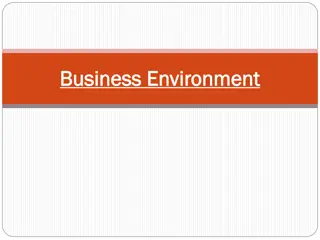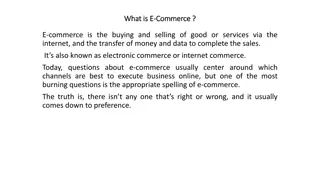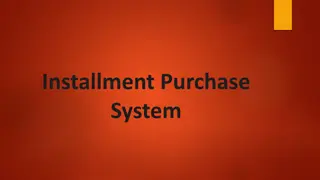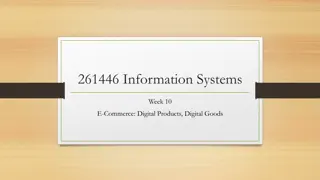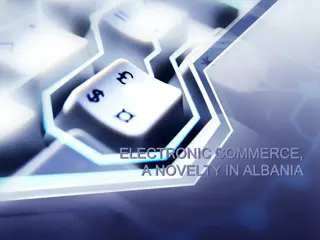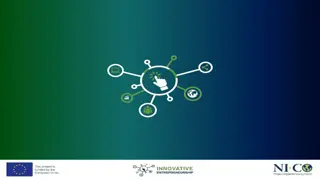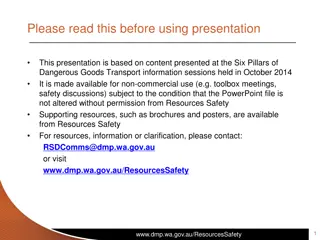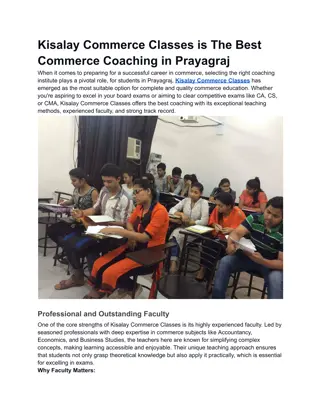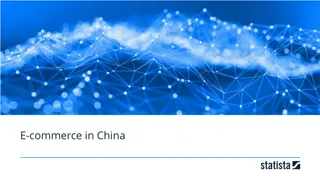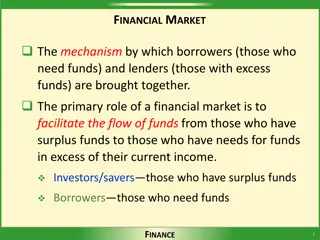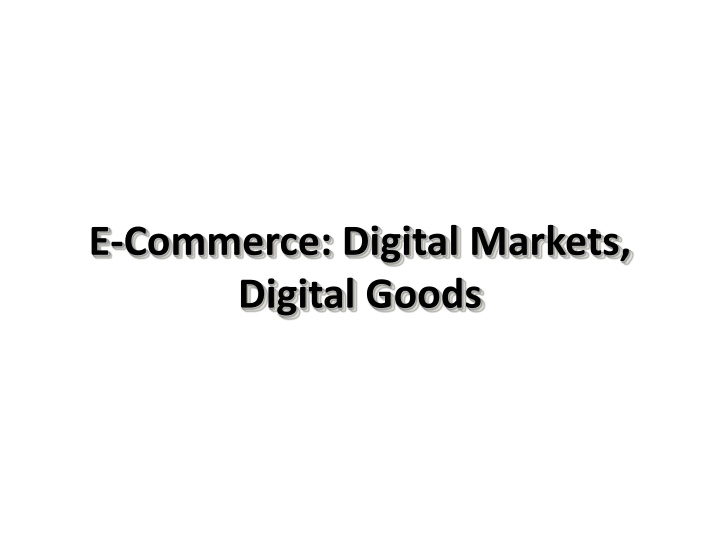
E-Commerce: Digital Markets & Goods Overview
Dive into the world of e-commerce, exploring the growth of online transactions, unique features of e-commerce technology, and the impact of the Internet on digital markets and goods. Discover how ubiquity, global reach, universal standards, richness, and interactivity shape the e-commerce landscape.
Download Presentation

Please find below an Image/Link to download the presentation.
The content on the website is provided AS IS for your information and personal use only. It may not be sold, licensed, or shared on other websites without obtaining consent from the author. If you encounter any issues during the download, it is possible that the publisher has removed the file from their server.
You are allowed to download the files provided on this website for personal or commercial use, subject to the condition that they are used lawfully. All files are the property of their respective owners.
The content on the website is provided AS IS for your information and personal use only. It may not be sold, licensed, or shared on other websites without obtaining consent from the author.
E N D
Presentation Transcript
E-Commerce: Digital Markets, Digital Goods
E-commerce and the Internet E-Commerce Today E-commerce: use of the Internet and Web to transact business; digitally enabled transactions. Began in 1995 and grew exponentially; still growing even in a recession. Companies that survived the dot-com bubble burst and now thrive.
E-commerce and the Internet The Growth of E-Commerce Figure 9-1
E-commerce and the Internet Why E-Commerce Is Different Ubiquity Internet/Web technology available everywhere: work, home, and so on, anytime. Effect: Marketplace removed from temporal, geographic locations to become marketspace Enhanced customer convenience and reduced shopping costs
E-commerce and the Internet Unique Features of E-commerce Technology Global reach The technology reaches across national boundaries, around Earth Effect: Commerce enabled across cultural and national boundaries seamlessly and without modification. Marketspace includes, potentially, billions of consumers and millions of businesses worldwide.
E-commerce and the Internet Unique Features of E-commerce Technology Universal standards One set of technology standards: Internet standards Effect: Disparate computer systems easily communicate with one another. Lower market entry costs costs merchants must pay to bring goods to market. Lower consumers search costs effort required to find suitable products.
E-commerce and the Internet Unique Features of E-commerce Technology Richness Supports video, audio, and text messages Effect: Possible to deliver rich messages with text, audio, and video simultaneously to large numbers of people. Video, audio, and text marketing messages can be integrated into single marketing message and consumer experience.
E-commerce and the Internet Unique Features of E-commerce Technology Interactivity The technology works through interaction with the user Effect: Consumers engaged in dialog that dynamically adjusts experience to the individual. Consumer becomes co-participant in process of delivering goods to market.
E-commerce and the Internet Unique Features of E-commerce Technology Information density Large increases in information density the total amount and quality of information available to all market participants Effect: Greater price transparency Greater cost transparency Enables merchants to engage in price discrimination
E-commerce and the Internet Unique Features of E-commerce Technology Personalization/Customization Technology permits modification of messages, goods Effect: Personalized messages can be sent to individuals as well as groups. Products and services can be customized to individual preferences.
E-commerce and the Internet Unique Features of E-commerce Technology Social technology The technology promotes user content generation and social networking Effect: New Internet social and business models enable user content creation and distribution, and support social networks.
Key Concepts in E-commerce: Digital Markets and Digital Goods In a Global Marketplace Digital markets reduce Information asymmetry - when one party in a transaction has more information that is important for the transaction than the other party Search costs - the effort to find suitable products Transaction costs - the cost of participating in a market Menu costs - merchants costs of changing prices Digital markets enable Price discrimination - selling the same goods, or nearly the same goods, to different targeted groups at different prices Dynamic pricing - the price of a product varies depending on the demand characteristics of the customer or the supply situation of the seller Disintermediation - the removal of organizations or business process layers responsible for intermediary steps in a value chain.
E-commerce and the Internet The Benefits of Disintermediation to the Consumer The typical distribution channel has several intermediary layers, each of which adds to the final cost of a product, such as a sweater. Removing layers lowers the final cost to the consumer. Figure 9-2
E-commerce and the Internet Key Concepts in E-commerce: Digital Markets and Digital Goods In a Global Marketplace Digital goods Goods that can be delivered over a digital network E.g., music tracks, video, software, newspapers, books Cost of producing first unit almost entire cost of product: marginal cost of producing 2nd unit is about zero Costs of delivery over the Internet very low Marketing costs remain the same; pricing highly variable Industries with digital goods are undergoing revolutionary changes (publishers, record labels, etc.)
E-commerce: Business and Technology Types of E-commerce Business-to-consumer (B2C) Business-to-business (B2B) Grainger.com Consumer-to-consumer (C2C) Mobile commerce (m-commerce) Use of wireless mobile devices for purchasing goods and services. M-commerce is especially well-suited for location-based applications and services
E-commerce: Business and Technology E-commerce Business Models Portal - revenue: advertising E-tailer traditional sales over the web Content provider - revenue: access fees, advertising Transaction broker eSchwab (charges for transaction) Service provider - revenue: subscription fees, advertising Community provider -
E-commerce: Business and Technology E-commerce Revenue Models Advertising Sales Subscription Free/Fremium Transaction fee Affiliate
E-commerce: Business and Technology Web 2.0, Social Networking, and the Wisdom of Crowds Most popular Web 2.0 service: social networking Social networking sites sell banner ads, user preference information, and music, videos and e-books. Social shopping sites Swap shopping ideas with friends (Kaboodle, ThisNext) Wisdom of crowds (crowd sourcing) Large numbers of people can make better decisions about topics and products than a single person. Prediction markets: peer-to-peer betting markets on specific outcomes (elections, sales figures, designs for new products) LinkedIn is the largest professional and business social network that members often use to recruit employees and find jobs.
E-commerce: Business and Technology E-commerce Marketing Internet provides marketers with new ways of identifying and communicating with customers. Long tail marketing: ability to reach a large audience inexpensively. Behavioral targeting: tracking online behavior of individuals on thousands of Web sites. Advertising formats include search engine marketing, display ads, rich media, and e-mail. Collaborative filtering - a method of making automatic predictions (filtering) about the interests of a user by collecting preferences from many users .The assumption is that if a person A has the same opinion as a person B on an issue, A is more likely to have B's opinion on a different issue x than to have the opinion on x of a person chosen randomly
E-commerce: Business and Technology Web Site Visitor Tracking (Clickstream) E-commerce Web sites have tools to track a shopper s every step through an online store. Close examination of customer behavior at a Web site selling women s clothing shows what the store might learn at each step and what actions it could take to increase sales. Extensive metrics exist for various types of user behavior, from the time spent on a Web page to the number of products ordered and placed in a shopping cart but not purchased.
E-commerce: Business and Technology Web Site Personalization Firms can create unique personalized Web pages that display content or ads for products or services of special interest to individual users, improving the customer experience and creating additional value.
E-commerce: Business and Technology Business-to-Business Electronic Commerce: New Efficiencies and Relationships Electronic data interchange (EDI) Computer-to-computer exchange of standard transactions such as invoices, purchase orders. Major industries have EDI standards that define structure and information fields of electronic documents for that industry. More companies increasingly moving away from private networks to Internet for linking to other firms. E.g., procurement: businesses can now use Internet to locate most low-cost supplier, search online catalogs of supplier products, negotiate with suppliers, place orders, and so on
E-commerce: Business and Technology Electronic Data Interchange (EDI) Companies use EDI to automate transactions for B2B e-commerce and continuous inventory replenishment. Suppliers can automatically send data about shipments to purchasing firms. The purchasing firms can use EDI to provide production and inventory requirements and payment data to suppliers.
E-commerce: Business and Technology Business-to-Business Electronic Commerce: New Efficiencies and Relationships Private industrial networks (private exchanges) Large firm using extranet to link to its suppliers, distributors, and other key business partners Owned by buyer Permits sharing of: Product design and development Marketing Production scheduling and inventory management Unstructured communication (graphics and e-mail)
E-commerce: Business and Technology Business-to-Business Electronic Commerce: New Efficiencies and Relationships Net marketplaces (e-hubs) Single market for many buyers and sellers. Industry-owned or owned by independent intermediary. Generate revenue from transaction fees, other services. Use prices established through negotiation, auction, RFQs, or fixed prices. May focus on direct or indirect goods. May be vertical or horizontal marketplaces.
E-commerce: Business and Technology Social e-commerce: Based on digital social graph Mapping of all significant online relationships Four features of social e-commerce driving its growth Social sign-on Collaborative shopping Network notification Social search (recommendations) This animation shows the different types of relations between social objects. User Evais a friend of Adam and Kate, though Adamand Kate are not friends themselves. Peter'sphoto was "liked" by many users, including Eva. Also Eva listened to the Last.fm radio and watched the video from YouTube.
E-commerce: Business and Technology Social media: Fastest growing media for branding and marketing Social network marketing: Seeks to leverage individuals influence over others in social graph Target is a social network of people sharing interests and advice Social networks have huge audiences Facebook: 150 million U.S. visitors monthly But companies are finding that old-school methods such as e-mail, display ads, and search engines are still the most cost effective tools for selling goods and services. Click-through rates on search ads are five times higher than ads on Facebook Generally, people do not go to Facebook to buy things and are not clicking on display ads (less than 2% of users).
The Mobile Digital Platform and Mobile E-commerce M-commerce In 2012 is 10% of all e-commerce Fastest growing form of e-commerce Some areas growing at 50% Four billion mobile phone users worldwide Main areas of growth Retail sales at top Mobile 400 (Amazon, eBay, etc.) Sales of digital content (music, TV, etc.) Local search for restaurants, museums, stores
Consolidated Mobile Commerce Revenues Figure 10-9 Mobile e-commerce is the fastest growing type of B2C e-commerce although it represents only a small part of all e-commerce in 2011.
Building an E-commerce Web Site Pieces of the site-building puzzle Assembling a team with the skills required to make decisions about: Technology Site design Social and information policies Hardware, software, and telecommunications infrastructure Customer s demands should drive the site s technology and design.
Building an E-commerce Web Site Business objectives The capabilities the site should have Business decisions should drive technology Example: execute a transaction payment System functionality Technology needed to achieve objective Example: a shopping cart or other payment system Information requirement Specific data and processes needed Example: secure credit card clearing, multiple payment options
Building an E-commerce Web Site Alternatives in building the Web site: Completely in-house Mixed responsibility Completely outsourced Co-location Web site budgets Several thousand to millions per year 50% of budget is system maintenance and content creation
Choices in Building and Hosting Web Sites Figure 10-10 You have a number of alternatives to consider when building and hosting an e-commerce site.
Components of a Web Site Budget Figure 10-11

